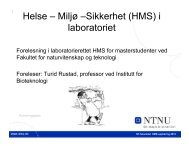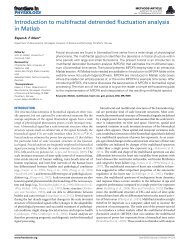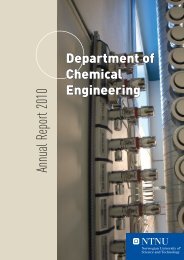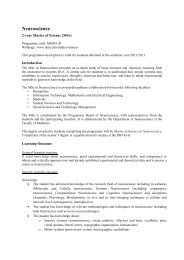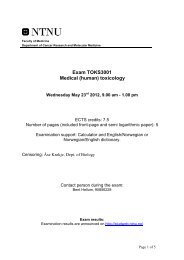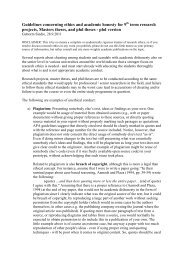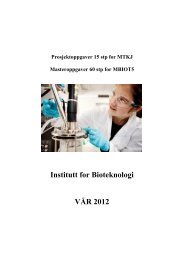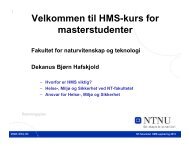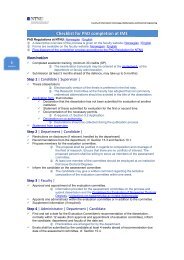Annual Report 2011 - NTNU
Annual Report 2011 - NTNU
Annual Report 2011 - NTNU
You also want an ePaper? Increase the reach of your titles
YUMPU automatically turns print PDFs into web optimized ePapers that Google loves.
New PhD Project<br />
What drives continuous internal conflict?<br />
The case of the Naxalite insurgency in India<br />
Katinka Sætersdal Remøe<br />
Department of Geography<br />
The aim of this research project is to identify explanatory factors contributing<br />
to continuous internal conflict by using the Naxalite (Maoist) insurgency in<br />
India as a case. Specifically, the project looks at natural resource extraction as a<br />
facilitating factor for conflict, providing resources and opportunities for the<br />
actors involved. The Naxalite insurgency is one of many long‐term internal<br />
conflicts taking place within India. Although it has gone through changes in<br />
both nature and scope, it has endured since its birth in the West Bengal village<br />
of Naxalbari in 1967 when unfair treatment by landowners towards peasants<br />
resulted in a peasant uprising and has become one of India’s most serious<br />
challenges to internal security. The area affected by Naxalite violence,<br />
commonly referred to as “the red corridor,” is characterized by<br />
underdevelopment and socio‐economic inequality, and this has been seen as<br />
the main reason behind Naxalite mobilization and support.<br />
The project is structured in three parts, each driven by their separate research<br />
questions. In the first part, a state‐level quantitative study of explanatory<br />
factors of Naxalite violence will be conducted in order to identify key variables<br />
for a local‐level analysis. However, given how underdevelopment and socioeconomic<br />
inequality is also highly present in areas untouched by Naxalite<br />
violence, are there other factors that could better explain the location and<br />
spread of the conflict, such as natural resource extraction?<br />
The next part is an analysis of how to use GIS in choosing a site for fieldwork<br />
when studying internal conflicts. The GIS methodology will determine where<br />
the research for the last component of the project will be carried out. The areas<br />
affected by Naxalite violence are typically abundant in natural resources and is<br />
attracting industrial investment mostly within the mining sector. Hence, this<br />
last part is a local‐level analysis exploring the relationship between natural<br />
resource extraction and the spread of Naxalite violence with a special focus on<br />
how natural resource extraction provides resources and opportunities for the<br />
actors involved in the conflict.<br />
The PhD project is supervised by Associate Professor Jan Ketil Rød, with<br />
Professor Scott Gates and Associate Professor Päivi Lujala as associated<br />
supervisors.<br />
13



